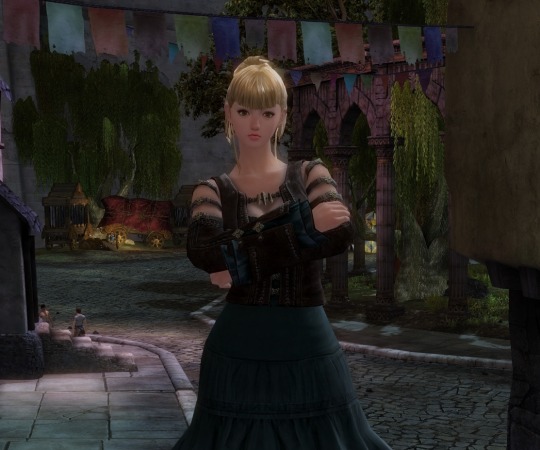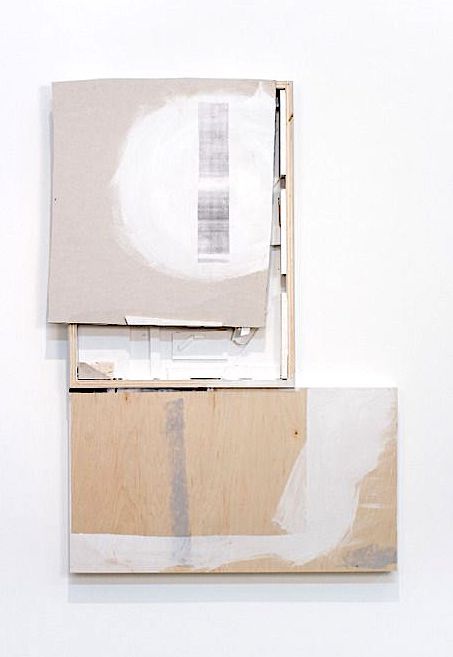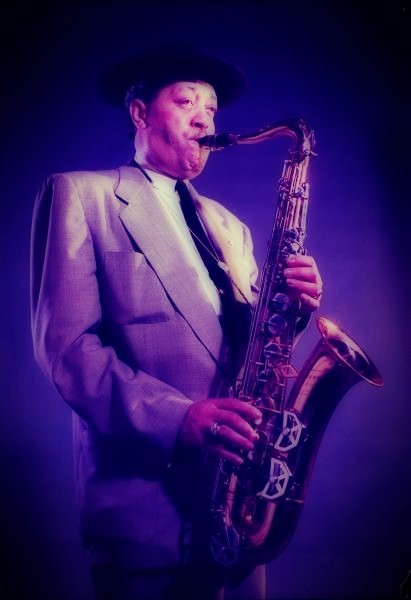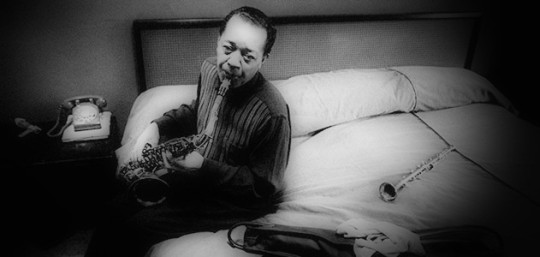#brilhart
Text
my latest gw2 project.......

meet kathrine brilhart!
she's a human (ascalonian-canthan) warrior and will be my commander. i've mainly stressed myself out about everyone else having commanders that have already hit all their pivotal arcs and feeling like i was "left behind", but with kathrine i'm going to just take my time and see how it goes!
anyhow! kathrine comes from humble, commoner origins. her family isn't poor, but they aren't rich either. she comes from a family of people just trying to get by in a tumultuous world.
in terms of personality, kathrine is sort of like.. an orange cat. she's a little weird, and she sort of just does things. where she is now, she hasn't really hit any significant "if you dont do this the world explodes" plot points, so she's sort of just chilling and running errands around kryta. in terms of age, she's only in her early 20s.
she's also the "hero of shaemoor" but she isn't really interested in that sort of title. she just did what any good civil militia member did.
#guild wars 2#gw2#gw2 oc#gw2 human#gw2 warrior#you cant see it since shes emoting but she has a greatsword :]#kathrine brilhart#rambling
9 notes
·
View notes
Text
Discuss core communication guidelines and strategies for problem-solving in professional collaboration.
Part of working in a team is being able to lead and organize the group you are working in as well as make informed decisions and solve problems as they arise. Consider the following scenario for this assignment:
Scenario:
As a long term employee at your organization you are now the chair of the annual holiday function. You have been tasked with putting together a team and coming up with this year’s event. You were told that your team must represent a diverse mindset and bring in the various viewpoints of those within the organization. Through the years there have been many different ideas of what the holiday function should look like. The marketing team believes a dinner and dancing extravaganza is needed, the HR team seems to think that the whole thing should be cancelled and everyone should get a gift card, and the finance department would like a modest dinner at a local mom and pop restaurant.
For this assignment create an agenda using one of the problem-solving agenda systems discussed in the textbook (Dewey’s Reflective Thinking, Ross’s Four-Step Agenda, Wright’s Ten Step Agenda, Brilhart-Jochem Ideation Criteria, or Functional Approach to Problem Solving) and list at least two problem solving techniques you will use in the planning process. You will need to consider the objective of the meeting and the issues that need resolved. Remember, it is important to create a realistic meeting agenda that addresses the issue at hand. Once you have created the agenda please answer the questions below:
Discuss the problem-solving agenda system you used for the meeting. Explain what this system is. What are the core communication guidelines and strategies for this system?
Explain why you selected this particular problem-solving agenda and approach. What are some of the benefits to using the approach you chose?
This assignment addresses the following unit learning outcomes:
Discuss core communication guidelines and strategies for problem-solving in professional collaboration.
Apply the group problem-solving skills to resolving workplace ethical issues.
It also addresses the following Course Outcome:
CM315-3: Explain decision-making and problem-solving techniques for small workplace groups.
First appeared on Assignments.tips
0 notes
Video
youtube
[Jazz Transcriptions] Stella By Starlight / Stan Getz - Tenor Saxophone
#jazztranscription#stella by starlight#jazzstandards#jazzstudies#stan getz#saxophone#jazz saxophone#tenorsaxophone#brilhart#personaline#forestonejapan#forestonesaxophone#marmaduke#musictranscriber
1 note
·
View note
Photo

Brigadeiro 50% cacau, e beijinho para uma comemoração de casamento íntima super linda e delicada. #Araraquara #moradadosol #aracity #brigadeiro #beijinho #doces #docesdourado #dourado #brilhart #confeitaria #confeitandocomamor #instacake #casamento (em Araraquara) https://www.instagram.com/p/CLRxL_NBQrn/?igshid=1suokhlvjug7r
#araraquara#moradadosol#aracity#brigadeiro#beijinho#doces#docesdourado#dourado#brilhart#confeitaria#confeitandocomamor#instacake#casamento
0 notes
Photo

a-beautifulchaos
Jenny Brilhart °America
108 notes
·
View notes
Audio

Song: "I Must Be Dreaming"
Composers: Pat Flaherty & Al Sherman
Lyricist: Al Dubin
Okeh Record: 41051 Matrix # 400706
Performed By: Joe Venuti & His New Yorkers (With Ed. Lang): Fred “Fuzzy” Farrar, Leo McConville (tp), Charlie Butterfield (tb), Arnold Brilhart, Max Farley (as, fl), Herb Spencer (ts), Don Murray (cl, bari), Joe Venuti (vln), Arthur Schutt (p, cel), Eddie Lang (g), Hank Stern (tu), Chauncey Morehouse (d, orchestra
bells), Harold "Scrappy" Lambert (vcl), Fud Livingston (arr).
Recorded in New York on May 25, 1928

#joe venuti#eddie lang#1920s#foxtrot#popular songs#jazz age#vintage pop and jazz#scrappy lambert#78 rpm#shellac#roaring twenties#flappers#gatsby era#1928 song#new york jazz#my transfer#okeh#columbia records#roaring 20s#Joe Venuti & his New Yorkers
141 notes
·
View notes
Photo

Um pouco sobre o lançamento do Livro Ilustres Poemas Meus. Momento ainda mais ilustre. Homenagem aos parceiros José Roberto e Melissa Rabelo, membros do Ilustre Jovem. Projeto Ativo da Brilharte o qual tem o objetivo de formar jovens ilustradores para seu Programa Cultural e Brilharte Editorial. #TeiaPoética #LancamentoIlustresPoemasMeus #BrilharteTransformam #BCA (em BCA - Brilharte Centro de Artes) https://www.instagram.com/p/B5z20uqJSiO/?igshid=14ia7zr4eo2jl
1 note
·
View note
Text
My fangan classes as of now
I now have four classes, 64 characters. I still have to give everyone names in the 3rd and 4th classes as well as figure out talents for Daisuke and the 2nd and 4th protags.
Class #1:
1. (Protag) Voice actress - Kasumi Sasaki - she/her
2. Gardener - Mia Akiyama - she/her
3. Scientist - Itsuki Kita - he/him
4. Birdwatcher - Archie Reid - he/him
5. Dentist - Aimi Fujimoto - she/her
6. Comedian - Rokuro Himura - he/him
7. Diver - Haruka Nakano - she/her
8. Blogger - Yamato Nishimura - he/him/they/them
9. Ice skater - Aiia Konstaninov - she/her
10. Model - Hayate Matsushita - he/him
11. Interior designer - Ayane Tuskuda - she/her
12. Tattoo artist - Ryuu Yamazaki - he/him
13. Translator - Luca Brilhart - he/him
14. Racecar driver - Shun Oshiro - she/her
15. Taxidermist - Kuroi Akuma - he/him
16. Party planner - Lulu Eucard - she/her
Class #2:
1. (Protag) he/him
2. Drag Queen - Julian Tash - he/him (she/her when in his stage persona, Julie Diamond)
3. Poet - Reo Aikyo - he/him
4. Pop dancer - Sara Kawaguchi - she/her
5. Chess player - Yuuto Inoue - he/him
6. Archer - Mayumi Shibata - she/her
7. Ringleader - Masuyo Fujioka - she/her
8. Puppeteer - Ningyo-shi - he/him
9. Roller skater - Akira Kasokudo - she/her
10. Skateboarder - Aiko Kasokudo - he/him
11. mathematician - Kiku Takahashi - she/her
12. Hockey player - Andre Willis - he/him
13. Lawyer - Kunio Virtanen - he/him
14. Kick boxer - Lily Arakaki - she/her
15. Seamstress - Chikako Iwasaki - she/her
16. Paleontologist - Kaseki Azuma - she/her
Class #3:
1. (Protag) Unlucky student - he/him
2. Mall santa - Nick Claus - he/him
3. Pitchman - Bill Schmidt - he/him
4. Cup stacker - she/her
5. Geometric artist - he/him
6. Vocabulary - he/him
7. Furry - she/her
8. Pirate - he/him
9. Cashier - she/her
10. Dog walker - he/him
11. Hugger - she/her
12. Hindsight - she/her
13. Whistler - she/her
14. Tourist - she/her/they/them
15. Yo-yo-er - she/her
16. Vape master - he/him
Class #4:
1. (Protag) she/her
2. Jockey - Tsuikyu Fugyne - she/her
3. Archer - Mayumi Shibata - she/her
4. Daisuke Sato - he/him
5. Dart player - he/him
6. Game show host - he/him
7. Historian - she/her
8. Drummer - he/him
9. Pyrotechnician - she/her
10. Undertaker - he/him
11. Farmer - she/her
12. Candle maker - she/her
13. Exterminator - he/him
14. Suntwoman - she/her
15. Reporter - he/him
16. Surfer - he/him
#id like to do more with them#but im just not motivated#cuz no one is interested :/#txt w drex#fanganronpa
4 notes
·
View notes
Text
Lester Young






Lester Willis Young (August 27, 1909 – March 15, 1959), nicknamed "Pres" or "Prez", was an American jazz tenor saxophonist and occasional clarinetist.
Coming to prominence while a member of Count Basie's orchestra, Young was one of the most influential players on his instrument. In contrast to many of his hard-driving peers, Young played with a relaxed, cool tone and used sophisticated harmonies, using what one critic called "a free-floating style, wheeling and diving like a gull, banking with low, funky riffs that pleased dancers and listeners alike".
Known for his hip, introverted style, he invented or popularized much of the hipster jargon which came to be associated with the music.Early life and career
Lester Young was born in Woodville, Mississippi, and grew up in a musical family. His father, Willis Handy Young, was a respected teacher, his brother Lee Young was a drummer, and several other relatives performed music professionally. His family moved to New Orleans, Louisiana, when Lester was an infant and later to Minneapolis, Minnesota. Although at a very young age Young did not initially know his father, he learned that his father was a musician. Later Willis taught his son to play the trumpet, violin, and drums in addition to the saxophone.
Lester Young played in his family's band, known as the Young Family Band, in both the vaudeville and carnival circuits. He left the family band in 1927 at the age of 18 because he refused to tour in the Southern United States, where Jim Crow laws were in effect and racial segregation was required in public facilities.With the Count Basie Orchestra
In 1933 Young settled in Kansas City, where after playing briefly in several bands, he rose to prominence with Count Basie. His playing in the Basie band was characterized by a relaxed style which contrasted sharply with the more forceful approach of Coleman Hawkins, the dominant tenor sax player of the day.
Young left the Basie band to replace Hawkins in Fletcher Henderson's orchestra. He soon left Henderson to play in the Andy Kirk band (for six months) before returning to Basie. While with Basie, Young made small-group recordings for Milt Gabler's Commodore Records, The Kansas City Sessions. Although they were recorded in New York (in 1938, with a reunion in 1944), they are named after the group, the Kansas City Seven, and comprised Buck Clayton, Dicky Wells, Basie, Young, Freddie Green, Rodney Richardson, and Jo Jones. Young played clarinet as well as tenor in these sessions. Young is described as playing the clarinet in a "liquid, nervous style." As well as the Kansas City Sessions, his clarinet work from 1938–39 is documented on recordings with Basie, Billie Holiday, Basie small groups, and the organist Glenn Hardman. Billie and Lester met at a Harlem jam session in the early 30s and worked together in the Count Basie band and in nightclubs on New York's 52nd St. At one point Lester moved into the apartment Billie shared with her mother, Sadie Fagan. Holiday always insisted their relationship was strictly platonic. She gave Lester the nickname "Prez" after President Franklin Roosevelt, the "greatest man around" in Billie's mind. Playing on her name, he would call her "Lady Day." Their famously empathetic classic recordings with Teddy Wilson date from this era.
After Young's clarinet was stolen in 1939, he abandoned the instrument until about 1957. That year Norman Granz gave him one and urged him to play it (with far different results at that stage in Young's life—see below).Leaving Basie
Young left the Basie band in late 1940. He is rumored to have refused to play with the band on Friday, December 13 of that year for superstitious reasons spurring his dismissal, although Young and drummer Jo Jones would later state that his departure had been in the works for months. He subsequently led a number of small groups that often included his brother, drummer Lee Young, for the next couple of years; live and broadcast recordings from this period exist.
During this period Young accompanied the singer Billie Holiday in a couple of studio sessions (during 1937 - 1941 period) and also made a small set of recordings with Nat "King" Cole (their first of several collaborations) in June 1942. His studio recordings are relatively sparse during the 1942 to 1943 period, largely due to the recording ban by the American Federation of Musicians. Small record labels not bound by union contracts continued to record and he recorded some sessions for Harry Lim's Keynote label in 1943.
In December 1943 Young returned to the Basie fold for a 10-month stint, cut short by his being drafted into the army during World War II (see below). Recordings made during this and subsequent periods suggest Young was beginning to make much greater use of a plastic reed, which tended to give his playing a somewhat heavier, breathier tone (although still quite smooth compared to that of many other players). While he never abandoned the cane reed, he used the plastic reed a significant share of the time from 1943 until the end of his life. Another cause for the thickening of his tone around this time was a change in saxophone mouthpiece from a metal Otto Link to an ebonite Brilhart. In August 1944 Young appeared alongside drummer Jo Jones, trumpeter Harry "Sweets" Edison, and fellow tenor saxophonist Illinois Jacquet in Gjon Mili's short film Jammin' the Blues.
Army service
In September 1944 Young and Jo Jones were in Los Angeles with the Basie Band when they were inducted into the U.S. Army. Unlike many white musicians, who were placed in band outfits such as the ones led by Glenn Miller and Artie Shaw, Young was assigned to the regular army where he was not allowed to play his saxophone. Based in Ft. McClellan, Alabama, Young was found with marijuana and alcohol among his possessions. He was soon court-martialed. Young did not fight the charges and was convicted. He served one traumatic year in a detention barracks and was dishonorably discharged in late 1945. His experience inspired his composition "D.B. Blues" (with D.B. standing for detention barracks).
Some jazz historians have argued that Young's playing power declined in the years following his army experience, though critics such as Scott Yanow disagree with this entirely. Recordings show that his playing began to change before he was drafted. Some argue that Young's playing had an increasingly emotional slant to it, and the post-war period featured some of his greatest renditions of ballads.Post-war recordings
Young's career after World War II was far more prolific and lucrative than in the pre-war years in terms of recordings made, live performances, and annual income. Young joined Norman Granz's Jazz at the Philharmonic (JATP) troupe in 1946, touring regularly with them over the next 12 years. He made many studio recordings under Granz's supervision as well, including more trio recordings with Nat King Cole. Young also recorded extensively in the late 1940s for Aladdin Records (1946-7, where he had made the Cole recordings in 1942) and for Savoy (1944, '49 and '50), some sessions of which included Basie on piano.
While the quality and consistency of his playing ebbed gradually in the latter half of the 1940s and into the early 1950s, he also gave some brilliant performances during this stretch. Especially noteworthy are his performances with JATP in 1946, 1949, and 1950. With Young at the 1949 JATP concert at Carnegie Hall were Charlie Parker and Roy Eldridge, and Young's solo on "Lester Leaps In" at that concert is a particular standout among his performances in the latter half of his career.Struggle and revival
From around 1951, Young's level of playing declined more precipitously as his drinking increased. His playing showed reliance on a small number of clichéd phrases and reduced creativity and originality, despite his claims that he did not want to be a "repeater pencil" (Young coined this phrase to describe the act of repeating one's own past ideas). Young's playing and health went into a crisis, culminating in a November 1955 hospital admission following a nervous breakdown.
He emerged from this treatment improved. In January 1956 he recorded two Granz-produced sessions including a reunion with pianist Teddy Wilson, trumpet player Roy Eldridge, trombonist Vic Dickenson, bassist Gene Ramey, and drummer Jo Jones – which were issued as The Jazz Giants '56 and Pres and Teddy albums. 1956 was a relatively good year for Lester Young, including a tour of Europe with Miles Davis and the Modern Jazz Quartet and a successful residency at Olivia Davis' Patio Lounge in Washington, DC, with the Bill Potts Trio. Live recording of Young and Potts in Washington were issued later.
Throughout the 1940s and 50s, Young had sat in on Count Basie Orchestra gigs from time to time. The best-known of these is their July 1957 appearance at the Newport Jazz Festival, the line-up including many of his colleagues: Jo Jones, Roy Eldridge, Illinois Jacquet and Jimmy Rushing.The final years
On December 8, 1957, Young appeared with Billie Holiday, Coleman Hawkins, Ben Webster, Roy Eldridge, and Gerry Mulligan in the CBS television special The Sound of Jazz, performing Holiday's tune "Fine and Mellow." It was a reunion with Holiday, with whom he had lost contact over the years. She was also in physical decline, near the end of her career, and they both gave moving performances. Young's solo was brilliant, considered by many jazz musicians an unparalleled marvel of economy, phrasing and extraordinarily moving emotion. But Young seemed gravely ill, and was the only horn player who was seated (except during his solo) during the performance. By this time his alcoholism had cumulative effect. He was eating significantly less, drinking more and more, and suffering from liver disease and malnutrition. Young's sharply diminished physical strength in the final two years of his life yielded some recordings with a frail tone, shortened phrases, and, on rare occasions, a difficulty in getting any sound to come out of his horn at all.
Lester Young made his final studio recordings and live performances in Paris in March 1959 with drummer Kenny Clarke at the tail end of an abbreviated European tour during which he ate next to nothing and drank heavily. He died in the early morning hours of March 15, 1959, only hours after arriving back in New York, at the age of 49. He was buried at the Cemetery of the Evergreens in Brooklyn. According to jazz critic Leonard Feather, who rode with Holiday in a taxi to Young's funeral, she said after the services, "I'll be the next one to go." Holiday died four months later (on 7/17/59) at age 44.
Posthumous dedications and influence
Charles Mingus dedicated an elegy to Young, "Goodbye Pork Pie Hat", only a few months after his death. Wayne Shorter, then of Art Blakey's Jazz Messengers, composed a tribute, called "Lester Left Town".
Young's playing style influenced many other tenor saxophonists, including Stan Getz, as well as Zoot Sims, Al Cohn, and Gerry Mulligan. Paul Quinichette modeled his style so closely on Young's that he was sometimes referred to as the "Vice Prez" (sic). Sonny Stitt began to incorporate elements from Lester Young's approach when he made the transition to tenor saxophone. Lester Young also had a direct influence on the young Charlie Parker, and thus the entire be-bop movement. Other saxophonists, such as Dexter Gordon and Warne Marsh, were strongly influenced by Young.
In 1981 OyamO (Charles F. Gordon) published the book The Resurrection of Lady Lester, subtitled "A Poetic Mood Song Based on the Legend of Lester Young", depicting Young's life. The work was subsequently adapted for the theater, and was staged in November of that year at the Manhattan Theater Club, New York City, with a four-piece jazz combo led by Dwight Andrews.
In the 1986 film Round Midnight, the fictional main character Dale Turner, played by Dexter Gordon, was partly based on Young – incorporating flashback references to his army experiences, and loosely depicting his time in Paris and his return to New York just before his death. Young is a major character in English writer Geoff Dyer's 1991 fictional book about jazz, But Beautiful.
The 1994 documentary on a 1958 Esquire Magazine A Great Day in Harlem photo shoot for jazz musicians in New York contains many remembrances of Young by musicians who participated. Young was one of the participants and for many of the others the photo shoot was the last time they saw him alive.
Don Byron recorded the album Ivey-Divey in gratitude for what he learned from studying Lester Young's work, modeled after a 1946 trio date with Buddy Rich and Nat King Cole. "Ivey-Divey" was one of Lester Young's common eccentric phrases.
Peter Straub's short story collection Magic Terror (2000) contains a story called "Pork Pie Hat", a fictionalized account of the life of Lester Young. Straub was inspired by Young's appearance on the 1957 CBS-TV show
The Sound of Jazz, which he watched repeatedly, wondering how such a genius could have ended up such a human wreck.
Lester Young is said to have popularized use of the term "cool" to mean something fashionable. Another slang term he coined was the term "bread" for money. He would ask, "How does the bread smell?" when asking how much a gig was going to pay.DiscographyAs leaderNorgran RecordsVerve RecordsCharlie Parker RecordsPablo RecordsCompilations (as leader)
The Kansas City Sessions (recorded in 1938 and 1944) Commodore Records
The Complete Aladdin Recordings (1942–7) – the 1942 Nat King Cole session and more from the post-war period
The Complete Savoy Recordings (recorded 1944–50)
The Complete Lester Young Studio Sessions on Verve – 8-CD boxed set (includes the only two Young interviews in existence)
As sideman
With the Count Basie Orchestra
The Original American Decca Recordings (GRP, 1937-39 [1992])
America's No.1 Band: The Columbia Years (1936–1940 and non-Young sessions to 1942) Columbia Records
Super Chief (1936–1940 and non-Young sessions to 1964) Columbia Records
Count Basie at Newport (Verve, 1957)
With Jazz at the Philharmonic
The Complete Jazz at the Philharmonic on Verve: 1944-1949 (Verve, 1998)
The Drum Battle (Verve, 1952 [1960])
With Billie Holiday
Lady Day: The Complete Billie Holiday on Columbia Columbia Records
Billie Holiday and Lester Young: A Musical Romance (1937-1941) Columbia Records [2002]
Wikipedia
9 notes
·
View notes
Audio
(Sam Brilhart) The Challenge Mic- Where you must get on stage and pull random things out of a bowl and make people laugh.
0 notes
Text
Color Switch, O Jogo Das Cores TECH FENIX
Jogo de colorir muito divertido dos seus personagens favoritos do desenho. Apesar de parecer uma tarefa simples, colorir gera uma sensação de tranquilidade, bem-estar e estimula áreas cerebrais ligadas à motricidade, aos sentidos e à criatividade. Em caso de tinta fresca espere no mínimo 2 semanas após a pintura para aplicação do Papel de Parede. Este jogo de livro para colorir ou páginas de desenho educativo dino adequado todas as idades para seu filho, é fácil de jogar e desenhar dinossauro de desenho animado bonito ou fazer seu próprio dinossauro colorido por você.
TIA CECÉU EU E MEU IRMÃO PEDRO TODOS OS SÁBADOS NOS ASSISTIMOS SEU PROGRAMA. Volta e meia mostramos por aqui aplicativos para colorir personagens, a ideia é diminuir estresse e a ansiedade colorindo uma série de desenhos. A marca Brilhart Color traz como principal função processo de pintura em MDF, trazendo qualidade, luxo, exclusividade, diversão e funcionalidade as pessoas através de projetos residenciais, comerciais e corporativos de distintas empresas e profissionais que escolheram a vasta linha de produtos e atendimento da Brilhart Color.
Já me cadastrei e gostaria muito de receber livro de pintar em PDF. Existem também aqueles que gostam de pintar grandes cidades e construções, por isso separei duas imagens nesse estilo também. Para mesclar diferentes cores, eu começo colocando mais pressão no início e vou diminuindo até a cor chegar ao branco, tomando cuidado para a transição das cores ficar gradual.
Certamente esse artigo irá lhe ajudar a preencher algum tempo de seu filho(a) com a pintura de alguns desenhos dessa rede social da Disney que está, a cada dia, se tornando mais conhecida aqui no Brasil. PARA PINTAR DESENHOS CARINHA de ANJO para COLORIR da NOVELA a IMPRIMIR DULCE MARIA LORENA QUEIROZ Tamanho Papel A4. Se quiser personalizar seu marcador, é possível alterar a cor do marcador padrão, substituir a imagem do marcador por um ícone personalizado ou alterar outras propriedades do marcador.
0 notes
Text
Buescher Aristocrat Alto Saxophone Vintage Horn Musical Insturment
Buescher Aristocrat Alto Saxophone Vintage Horn Musical Insturment
A 70s model Buescher Aristocrat saxophone. In general good condition. Will probably need some pad work, and two fell stop pads are missing from the bell keys. Does have a ding on the U-bend, no apparent major damage. Some finish wear overall. Has a Brilhart Special mouthpiece. Case is in good shape.
SB Desk – HE
We sell mostly USED and UNIQUEitems. Expect minor evidence of use or…
View On WordPress
0 notes
Photo

a-beautifulchaos Jenny Brilhart / American artist
48 notes
·
View notes
Text
On Brhilhart mouthpieces
From time to time, someone asks me about saxophone mouthpieces. Today, I field a question about the classic Brilhart mouthpieces. The very first saxophone mouthpieces made by Arnold Brilhart were marked "Designed by Arnold Brilhart" on the back. They all had a rather large chamber and serial numbers. They were made in Great Neck, New York. All Tonalin, Ebolin and Tonalite models were made at this time. They all had four digit, large font, serial numbers and the tip openings were marked on the table. They were also marked "Great Neck, NY" on the shank.The Tonalin (the ivory-colored mouthpiece with black bite-plate) and Ebolin (black mouthpiece with white bite-plate) had medium-sized chambers with flat sidewalls and a five-digit serial number. They also had the name “Great Neck, New York” stamped on the shank and are highly desired mouthpieces. The first ones had the tip opening marked on the table. Later, they stamped them on the back.
Expect the Brilhart vintage Tonalin tenor mouthpieces to run anywhere from $200 to $300 (without cap or ligature), depending on the condition. Most bite plates will show wear, and you'd want to double check the shank for cracking. Never played the Tonalins myself, but did have the usual Ebolin and Level Air Metal mouthpieces that were all over the place in the '70's.
0 notes
Photo

Nessa próxima segunda seguiremos a votação da Ilustração com a ESTROFE 2 da "Covid Vem Aí". Participem Amigos da Arte. (em BCA - Brilharte Centro de Artes) https://www.instagram.com/p/CCkNhEGpdPs/?igshid=13nuki1g9hu68
0 notes